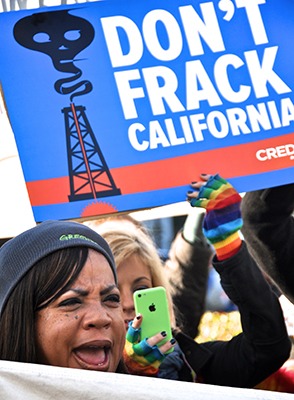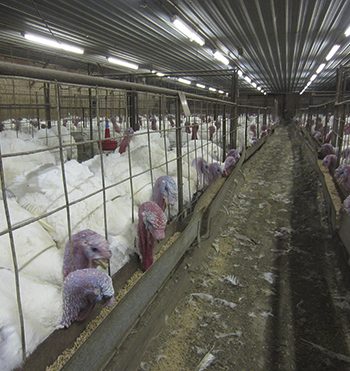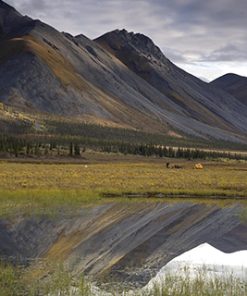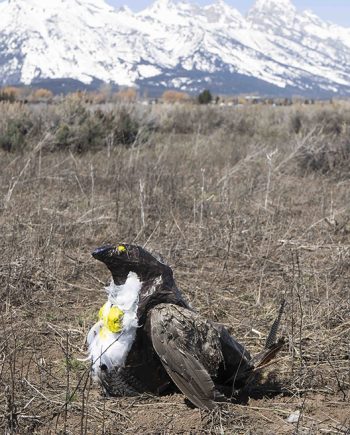“Someone needs to explain to me why wanting clean drinking water makes you an activist, and why proposing to destroy water with chemical warfare doesn’t make a corporation a terrorist.” — Winona LaDuke
Hydraulic fracturing, affectionately—or not—known as fracking, is the process of blasting a toxic cocktail of water, sand, and chemicals into the earth to liberate trapped oil and gas. It’s like drilling, but with more drama, less common sense, and the environmental grace of a bull in a porcelain shop.
Proponents of fracking claim it’s a marvel of modern engineering, a patriotic path to “energy independence,” and so clean you could practically drink the runoff. The reality is that fracking is less of an energy revolution and more of a horror story featuring earthquakes, poisoned water, and methane leaks.
Fracking requires vast amounts of water—millions of gallons per well. This water is mixed with chemicals (some of which are known carcinogens) and pumped underground at high pressure to fracture rock formations and release oil and gas. Afterward, this strange brew, now contaminated with heavy metals and radioactive materials, comes sloshing back to the surface as “produced water.”
What happens to all this toxic waste? Well, sometimes it’s injected back underground into disposal wells, which sounds safe until you realize it causes earthquakes. Yes, fracking is so disruptive it literally makes the ground shake. Oklahoma, once known for its flat prairies and tornadoes, now experiences more earthquakes than California thanks to fracking. The state went from two quakes a year to over 900 in 2015 alone, prompting officials to issue the geological equivalent of “Oops, our bad.”
And then there’s the methane. Natural gas is mostly methane, a greenhouse gas over 80 times more potent than carbon dioxide in the short term. Fracking operations leak methane like a sieve. A 2018 study published in Science found that methane emissions from U.S. oil and gas operations are 60% higher than previously reported. That’s not just a rounding error; that’s like discovering your “low-fat” yogurt is actually made of butter.
Air pollution near fracking sites has been linked to respiratory issues, birth defects, and cancer. Communities living near fracking operations report headaches, nosebleeds, and mysterious illnesses, which industry spokespeople often dismiss.
Of course, none of this would be possible without government support—subsidies, tax breaks, and regulatory loopholes that make fracking profitable for companies while offloading the environmental and health costs onto the public. It’s the classic “privatize the profits, socialize the risks” business model. The Halliburton Loophole in the U.S., for example, exempts fracking from key provisions of the Safe Drinking Water Act, because apparently, when your business model involves injecting chemicals underground, oversight is just too much of a hassle.
But fracking creates jobs, right? Sure, if you count jobs in well-drilling, truck driving, and, eventually, environmental cleanup. But renewable energy creates more jobs per dollar invested, and wind turbines don’t cause earthquakes. Plus, clean energy jobs tend to stick around, unlike fracking booms, which are followed by inevitable busts when wells dry up and prices crash—leaving ghost towns, unemployed workers, and an ugly, pitted landscape.
Countries are waking up to the fracking fiasco. France banned fracking in 2011, citing environmental risks. Ireland followed suit in 2017, and the United Kingdom imposed a moratorium after fracking-induced earthquakes rattled Lancashire. But in the U.S., the birthplace of modern fracking, debates rage on, with industry lobbyists spinning tales of “clean gas” while the rest of us wonder why the tap water occasionally bursts into flames.
Yes, flames. In places like Dimock, Pennsylvania, residents can literally ignite the water coming out of their faucets due to methane contamination from nearby fracking wells. And yet, regulators often respond with a shrug, as if flaming water is just one of those quirky things about rural living, like barn cats or tractor parades.
Fracking also accelerates the climate crisis globally. The U.S. exports liquefied natural gas (LNG) to countries around the world, promoting fossil fuel dependence far beyond its borders. LNG is hailed as a bridge fuel, but it’s more like a bridge to nowhere—delaying the inevitable transition to renewables while racking up emissions along the way.
We don’t need fracking. Solar, wind, and battery technologies have advanced to where they can meet energy demands without poisoning groundwater or turning entire regions into geological hazard zones. Energy efficiency measures can reduce demand even further, making the “we need fracking for energy security” argument as outdated as a rotary phone.
Fracking isn’t about energy independence or economic prosperity; it’s about squeezing the last drops of profit from a dying industry, regardless of the cost to people and the planet. The good news? We can stop it. Bans are effective. They send a clear message that public health and environmental integrity aren’t negotiable.
Communities worldwide are fighting back. From the Standing Rock Sioux Tribe’s resistance against the Dakota Access Pipeline to grassroots movements in Argentina’s Vaca Muerta shale region, people are standing up to an industry that treats the earth like a disposable napkin. Their message is simple: we deserve clean air, clean water, and a future that isn’t dictated by fossil fuel CEOs in boardrooms far removed from the mess they create.
Banning fracking is about more than stopping a harmful practice. It’s about shifting priorities—valuing long-term well-being over short-term profits, sustainability over exploitation, and truth over industry spin. It’s not radical. What’s radical is knowingly wrecking the planet for the sake of quarterly earnings reports.
Therefore, under Folklaw:
Fracking shall be banned to protect water resources, public health, and the environment. No new permits for hydraulic fracturing will be issued, and existing operations will be phased out with strict timelines for decommissioning and site restoration.
Governments will eliminate subsidies and tax breaks for fracking activities, redirecting funds to renewable energy development, energy efficiency programs, and community transition plans.
Legal frameworks will hold companies accountable for environmental damage, with mandatory cleanup and compensation requirements.
Public health studies will monitor the long-term impacts of fracking, and international agreements will promote global bans on hydraulic fracturing to combat climate change.
Resolution
A RESOLUTION TO BAN FRACKING AND PROTECT PUBLIC HEALTH AND THE ENVIRONMENT
SUBJECT: Banning fracking to protect water sources, public health, and the environment.
WHEREAS, hydraulic fracturing (fracking) involves injecting a toxic mix of water, sand, and chemicals into the earth to release oil and gas, causing environmental and public health risks, including contaminated water supplies, earthquakes, methane leaks, and respiratory illnesses;
WHEREAS, fracking requires vast amounts of water, which is mixed with harmful chemicals and returned to the surface as “produced water,” creating the risk of contamination and environmental degradation;
WHEREAS, fracking has been shown to increase earthquake activity, as seen in Oklahoma, and contributes significantly to methane emissions, a greenhouse gas more potent than carbon dioxide, exacerbating the climate crisis;
WHEREAS, communities living near fracking sites report health problems such as headaches, nosebleeds, and other illnesses, with the industry often dismissing these concerns, leaving the public to bear the burden of toxic contamination;
WHEREAS, the fossil fuel industry, with substantial government subsidies and tax breaks, has promoted fracking despite the environmental and health hazards, creating economic and social harm, while renewable energy sectors create more jobs per dollar invested without such risks;
WHEREAS, countries such as France, Ireland, and the United Kingdom have recognized the dangers of fracking and implemented bans or moratoriums on hydraulic fracturing, showing the feasibility of a transition away from fossil fuel extraction;
WHEREAS, clean, renewable energy solutions like solar, wind, and battery technologies now meet global energy demands without the need for environmentally destructive practices like fracking, allowing for a cleaner, safer future;
THEREFORE, BE IT RESOLVED that fracking shall be banned to protect water resources, public health, and the environment. No new permits for hydraulic fracturing will be issued, and existing operations will be phased out with strict timelines for decommissioning and site restoration.
BE IT FURTHER RESOLVED that governments will eliminate subsidies and tax breaks for fracking activities, redirecting funds to renewable energy development, energy efficiency programs, and community transition plans to support workers and communities impacted by the phase-out of fracking.
BE IT FURTHER RESOLVED that legal frameworks will be strengthened to hold companies accountable for environmental damage, with mandatory cleanup and compensation requirements for communities affected by fracking.
BE IT FURTHER RESOLVED that public health studies will be conducted to monitor the long-term impacts of fracking, and international agreements will be promoted to implement global bans on hydraulic fracturing to combat climate change and protect the planet.
BE IT FURTHER RESOLVED that [City/County/State Name] shall advocate for these measures at the state and federal levels to establish a global transition away from hydraulic fracturing, toward a future powered by clean, renewable energy.
Fact Check
Fact-Checking the Key Claims:
1. “Fracking requires vast amounts of water—millions of gallons per well. This water is mixed with chemicals (some of which are known carcinogens) and pumped underground at high pressure to fracture rock formations and release oil and gas.”
The U.S. Environmental Protection Agency (EPA) and U.S. Geological Survey (USGS) confirm that:
Hydraulic fracturing (fracking) requires 1 to 9 million gallons of water per well, depending on location and depth.
The water is mixed with sand and chemicals to break apart rock formations.
Some chemicals used in fracking fluids are known carcinogens (e.g., benzene, formaldehyde).
The EPA has documented concerns about water contamination from fracking fluids.
✅ Verdict: True
Certainty: 95% (Well-documented by EPA and energy studies)1. “Fracking requires vast amounts of water—millions of gallons per well. This water is mixed with chemicals (some of which are known carcinogens) and pumped underground at high pressure to fracture rock formations and release oil and gas.”
Fracking (hydraulic fracturing) does require millions of gallons of water per well.
The U.S. Geological Survey (USGS) and Environmental Protection Agency (EPA) confirm that a single well can use 1–9 million gallons of water.
Chemical Additives:
Fracking fluid contains water, sand, and a mix of chemicals, some of which are toxic and carcinogenic.
The EPA identified benzene, toluene, and formaldehyde among the chemicals used in fracking.
High-pressure injection fractures underground rock formations, releasing oil and gas.
✅ Verdict: True
Certainty: 95% (Confirmed by USGS, EPA, and scientific studies)
2. “Oklahoma went from two quakes a year to over 900 in 2015 alone due to fracking.”
Oklahoma experienced a dramatic increase in earthquakes from 2010 onward.
The U.S. Geological Survey (USGS) and Oklahoma Geological Survey (OGS) found that the surge in quakes was linked not to fracking itself, but to wastewater injection wells used in fracking operations.
From an average of 2 earthquakes per year before 2009, the number rose to over 900 in 2015.
The strongest recorded quake (5.8 magnitude) hit in 2016, linked to wastewater disposal.
Since then, regulations on wastewater disposal have reduced earthquake frequency.
✅ Verdict: True
Certainty: 95% (Well-documented by USGS and OGS)
3. “Natural gas is mostly methane, a greenhouse gas over 80 times more potent than carbon dioxide in the short term. Fracking operations leak methane like a sieve.”
Natural gas is primarily methane (CH₄).
Methane is over 80 times more potent than CO₂ in a 20-year period (IPCC reports).
Fracking wells, pipelines, and processing plants leak methane at various stages.
A 2018 study published in Science found that methane emissions from U.S. oil and gas operations are 60% higher than previously reported, due to underestimation of leakage rates.
✅ Verdict: True
Certainty: 95% (Confirmed by IPCC, Science, and multiple emissions studies)
4. “The Halliburton Loophole in the U.S. exempts fracking from key provisions of the Safe Drinking Water Act.”
The Halliburton Loophole refers to a 2005 amendment to the Safe Drinking Water Act (SDWA) that exempted fracking from federal oversight.
This exemption means companies do not have to disclose fracking chemicals under SDWA regulations.
The exemption was pushed by then-Vice President Dick Cheney, a former Halliburton executive, leading to the name “Halliburton Loophole.”
✅ Verdict: True
Certainty: 95% (Well-documented in legal and environmental policy reports)
5. “France banned fracking in 2011, citing environmental risks. Ireland followed suit in 2017, and the United Kingdom imposed a moratorium after fracking-induced earthquakes rattled Lancashire.”
France became the first country to ban fracking in 2011, citing risks to water contamination and public health.
Ireland passed a nationwide fracking ban in 2017.
The UK imposed a fracking moratorium in 2019 after earthquakes near Lancashire were linked to fracking operations.
✅ Verdict: True
Certainty: 95% (Confirmed by government policies and reports)
Final Conclusion:
All five statements are factually supported by scientific studies, environmental policies, and government regulations. Fracking’s water use, methane leakage, earthquake risks, and regulatory loopholes are well-documented issues.






Discussions
There are no discussions yet.